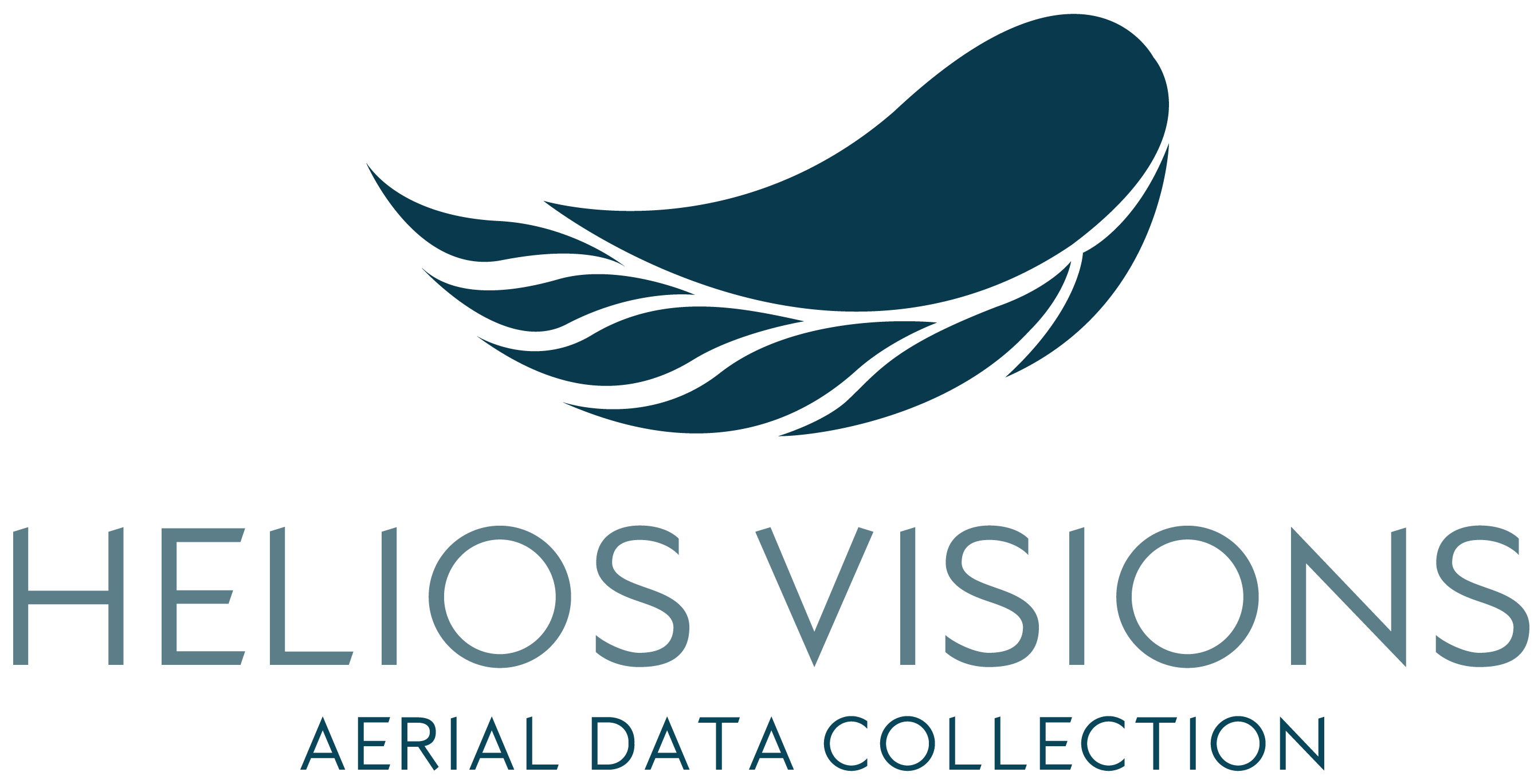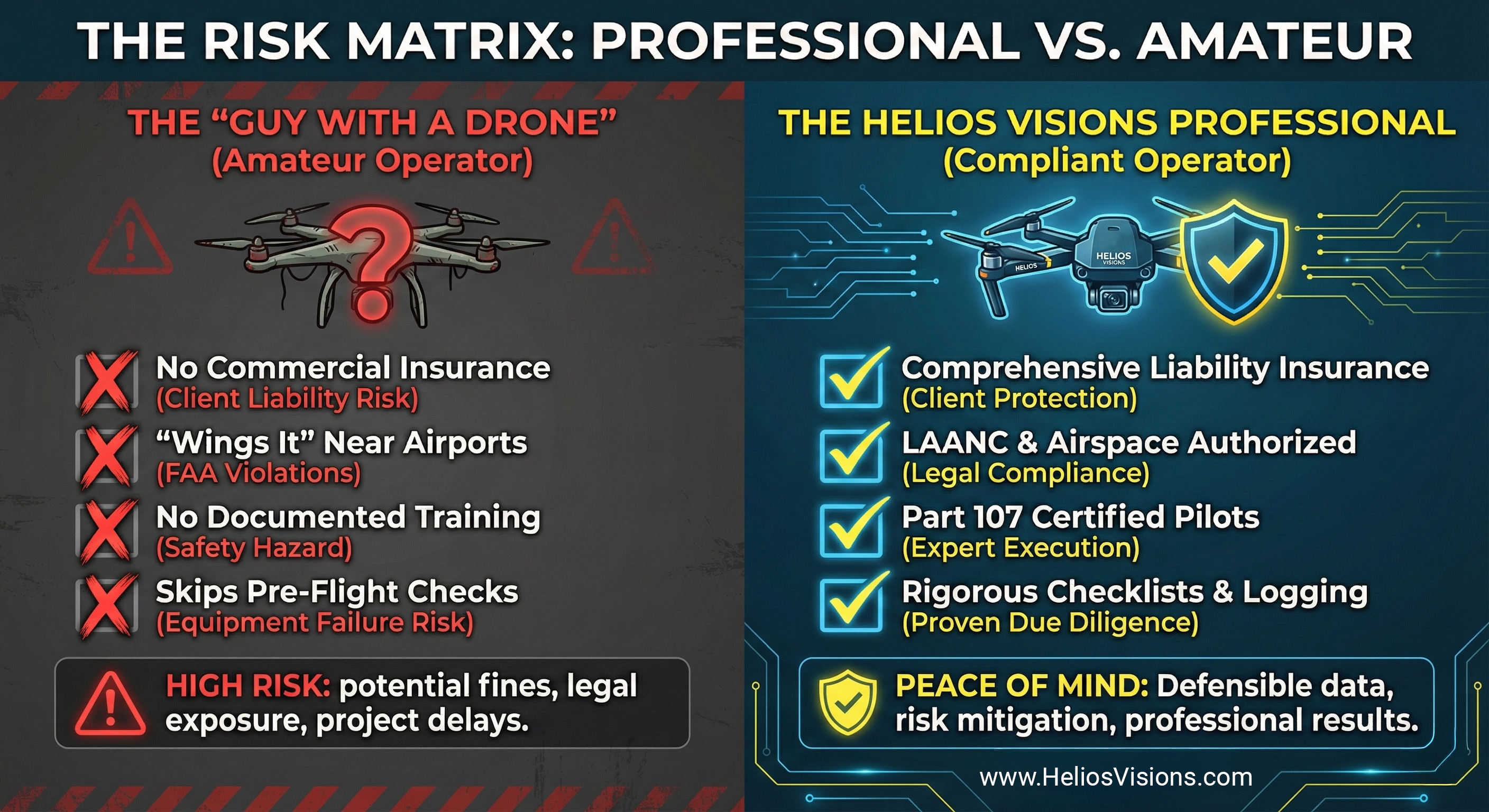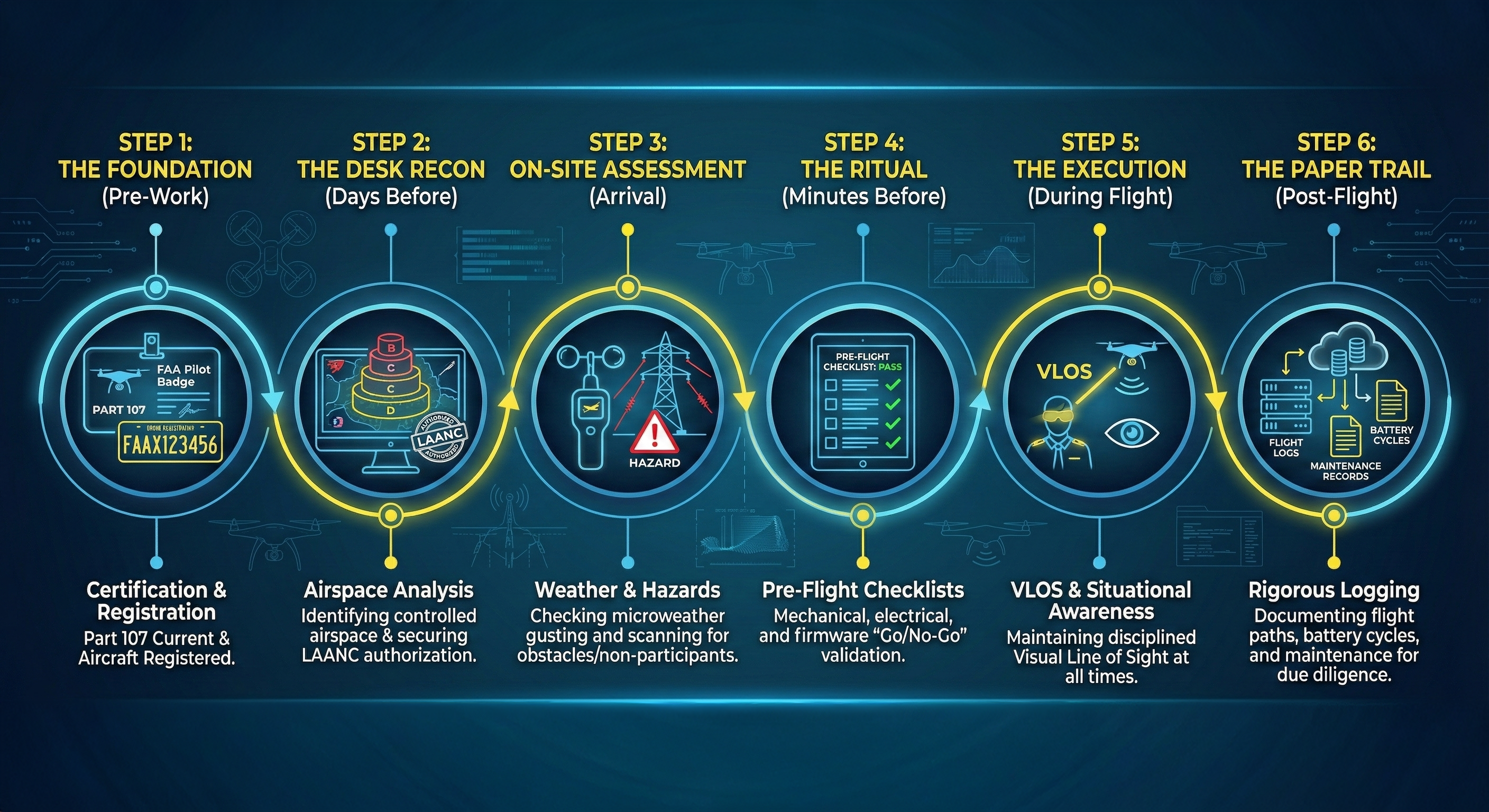The Anatomy of a Compliant Commercial Drone Flight
Any amateur can buy a drone and put it in the air. But what does a legal, insured, and professional drone operation actually look like before takeoff?
If you hire a drone pilot for a construction site survey, a real estate showcase, or an infrastructure inspection, you only see the final product: a crisp 4K video or a high-resolution inspection images.
What you don’t see is the iceberg beneath the surface.
In the world of commercial aviation—and yes, professional drone operations are aviation—the actual flying is only about 20% of the job. The other 80% is compliance, risk mitigation, and planning.
Flying a drone commercially without adhering to regulations isn’t just a bureaucratic annoyance; it carries significant legal and financial risks for both the pilot and the company hiring them.
So, what separates a “guy with a drone” from a professional, compliant operator? Let’s dissect the anatomy of a legal flight.
The Foundation: Certification and Registration
Before a propeller ever spins, two critical pieces of documentation must be in place.
The Pilot Certificate (Part 107) In the United States, if the flight is in furtherance of a business—even if no money changes hands—the pilot must hold an FAA Remote Pilot Certificate under Part 107. This isn’t just a piece of paper; it proves the pilot has passed knowledge tests on airspace classification, weather patterns, and emergency procedures.
-
Compliance Check: A compliant pilot will always have their physical Part 107 card on their person during operations.
Drone Registration Just like a Cessna or a Boeing 747, every commercial drone must be registered with the FAA and display its registration number prominently on the hull.
The “Desk Recon”: Airspace Analysis
A compliant flight begins days before takeoff, usually at a computer. The pilot needs to answer a critical question: Are we even allowed to fly there?
The sky above us is divided into complex three-dimensional segments called airspace classes.
-
Uncontrolled Airspace (Class G): Generally safe to fly without prior permission.
-
Controlled Airspace (Classes B, C, D, E): These surround airports. Flying here without explicit permission is illegal and dangerous.
The Role of LAANC A professional pilot uses tools that integrate with LAANC (Low Altitude Authorization and Notification Capability). This system provides near real-time processing of airspace authorizations.
A compliant operation never “wings it” near an airport. They have a digital trail showing they requested and received permission to occupy that airspace.
The On-Site Assessment: Weather and Hazards
Once the pilot arrives on location, the digital plan meets physical reality. The “desk recon” might have looked good, but site conditions change.
Microweather The local news might say it’s sunny with 10mph winds. But at 300 feet AGL (Above Ground Level) next to a skyscraper, wind tunnels might be gusting at 35mph. A compliant pilot uses on-site anemometers and aviation-specific weather apps to ensure conditions are within the aircraft’s safe operating limits.
The Hazard Scan Before unpacking the gear, the pilot scans the environment. They are looking for:
-
Power lines and guy wires (which are often invisible to drone sensors).
-
Trees with overhanging branches.
-
Non-participants (people not involved in the operation who cannot be flown over).
The Ritual: Pre-Flight Checklists
This is the step amateurs skip and professionals live by.
A compliant pilot does not rely on memory to ensure their aircraft is safe. They use a physical or digital checklist, similar to what airline pilots use before pushback.
They are checking for cracked propellers, swollen batteries, secure camera payloads, and correct firmware versions. If any item fails the checklist, the flight is a “no-go” until it is fixed. Skipping this 5-minute ritual is the leading cause of preventable drone incidents.
The Execution: VLOS and Situational Awareness
During the flight itself, compliance is about discipline.
The Golden Rule of drone operations is VLOS (Visual Line of Sight). Unless you have a BVLOS (Beyond Visual Line of Sight) waiver from the FAA, the pilot, or a designated Visual Observer (VO) standing right next to them, must be able to see the drone with their own eyes at all times—without binoculars.
If the drone flies behind a building or too far away to determine its orientation, it is no longer a compliant flight. A professional knows their limits and will refuse requests to “just fly around back to check that one spot” if it breaks VLOS.
The Paper Trail: Post-Flight Logging
The job isn’t done when the drone lands. A compliant operation maintains rigorous records.
Every flight is logged, detailing the flight path, battery usage, weather conditions, and any anomalies. Furthermore, maintenance logs track every propeller change and firmware update. Why? Because if an incident ever occurs, the FAA (and insurance adjusters) will demand to see this documentation to prove due diligence was maintained.
The Takeaway
When you hire a drone service, you aren’t paying for someone to push joysticks. You are paying for risk management.
A compliant flight is “boring”. It is methodical. It is steeped in checklists and double-checks. And that is exactly how it should be.
If you are looking for professional aerial data collection, ensure your provider can walk you through their compliance anatomy. Safety is no accident.



